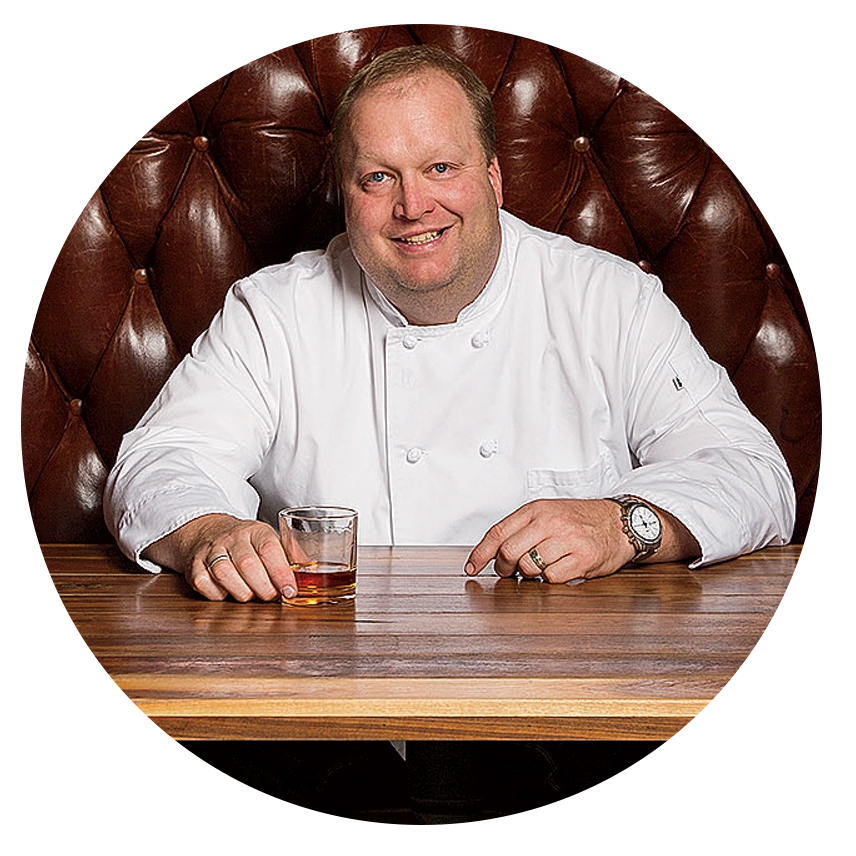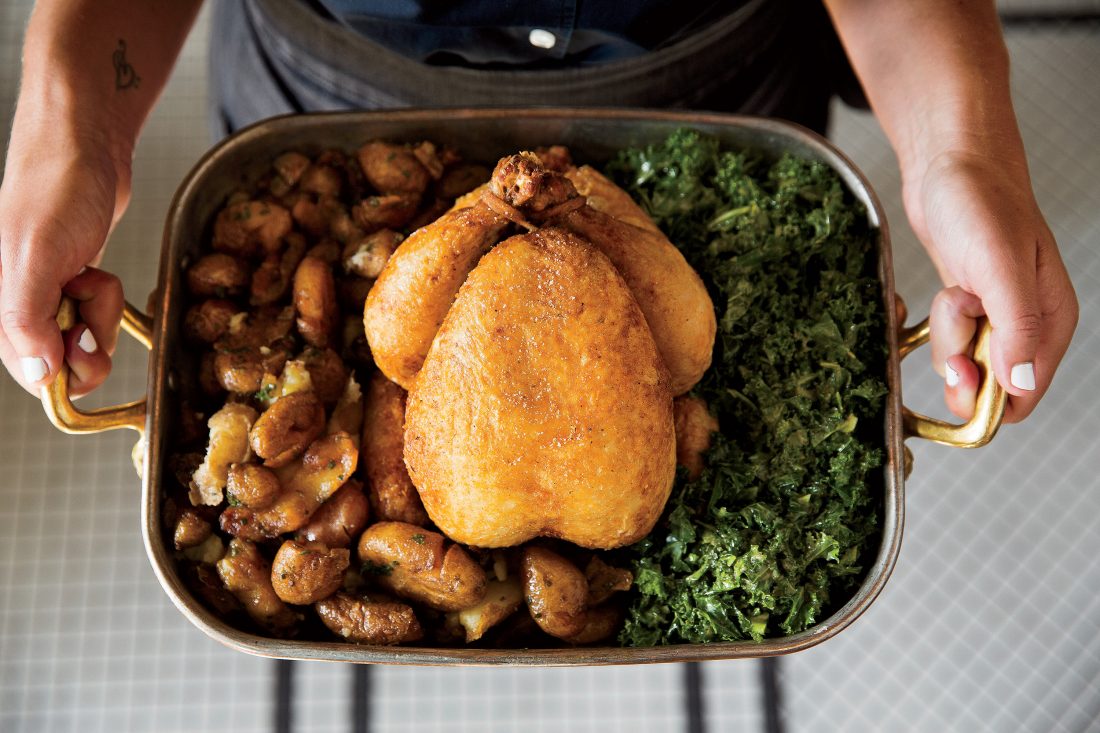Something about cooking a whole chicken feels like an accomplishment. Maybe it’s the cost—a whole bird is relatively cheap compared to boneless, skinless parts. It could be the presentation, as a sizzling centerpiece is pulled straight from the oven. Or perhaps it’s the versatility, knowing that pot pies, noodle soups, and chicken salad made with leftovers may very well be in your future. But preparing a whole yard bird for the first time can be intimidating for home cooks—and Nashville chef Andy Little understands why.

“Roast chicken is like chocolate cake,” he says. “People already have an idea in their head of what it’s supposed to taste like, and those recipes are the hardest to cook because you’re up against people’s memories.” At his 12 South restaurant, Josephine, Little puts a Southern spin on the bird, deep-frying it whole and serving it with potatoes, kale, and grilled-onion vinaigrette. But on his days off, he keeps the deep-fryer—and the mess—out of the equation. “A really nice Sunday dinner for me is roast chicken, a nice salad, and a bottle of wine,” he says. A few key details help him achieve a crispy exterior and juicy, tender meat that gives fried chicken a run for its money. “We’re not reinventing the wheel,” he says. “If I can do it, anybody can.” So G&G asked the Music City chef to share his tips for a perfect whole chicken roasted at home.
Start with a high-quality bird.
“Finding the best chicken you can is paramount,” says Little, who recommends home cooks shop from a local farmer or co-op. “This needs to be the chicken-iest chicken you can find, and we’re doing everything we can to help amplify that flavor.” If you don’t know where to start, ask the staff at your favorite restaurant to recommend a local supplier. “They’re going to tell you the best farm to go to, and if they know you’re in an area that’s difficult, they may let you buy one from the restaurant,” Little says. “The better relationships you can have with the people who are growing or cooking your food, the better your meals at home are going to be.”
Don’t wait until the last minute.
You may not need fancy equipment or a ton of experience to get a great roast bird, but you do need to plan ahead. On any given night, chefs at Josephine have around a dozen birds drying for the next night’s dinner service—and Little does the same thing for his own Sunday suppers. “I like to get a chicken at least a day in advance, season it, and let it sit uncovered in the refrigerator so that it has an opportunity to be as dry as possible,” Little says. Seasoning in advance allows the chicken to absorb the flavor all the way through, and eliminating excess moisture on the skin helps it crisp up in the oven. “By Saturday night, I’ll have the chicken seasoned and in the refrigerator trussed and ready to go.”

For the crispiest skin, avoid anything that adds moisture.
“Crispy skin kind of leads you into everything else,” Little says. “The fat content of the chicken is actually helping to flavor the meat as it’s roasting.” Drying out the chicken in the fridge is a great start, but Little keeps the skin top of mind when choosing his sides, too. “A lot of people will recommend putting some vegetables or herbs in the bottom of the pan to lift the chicken up a bit and cook as the chicken is roasting. I don’t do any of that,” he says. “They release steam as they cook, and any bit of added moisture in the oven is working against me.”
Buy a good meat thermometer. Then, relax.
Plenty of chefs roast chicken low and slow, then blast the bird with heat for the last ten or fifteen minutes to crisp up the skin. “Quite honestly, for me, that’s too much work on a Sunday afternoon,” Little says with a chuckle. “I want to be able to heat my oven to 425, set a timer, and then open the wine. For about a four-pound bird, you’re looking at around an hour to get it nicely cooked.” He recommends using a meat thermometer that can go in the oven with the chicken and sound an alarm when the bird has reached the right temperature. (This ThermoWorks model will do the trick.) “Insert it in between the leg and thigh joint of the chicken. I like to take that temp to about 176 degrees, and then let it carry over.” The temperature will continue to rise by a few degrees while the bird rests out of the oven.
Lean into leftovers.
When you’re spending more on a high-quality chicken, stretch it into two or three meals. “You could pick that meat and turn it into chicken salad sandwiches throughout the week. You’ve got the base for a pretty good chicken pot pie, even if you just buy the crust at the grocery store,” he says. “Or take the chicken, with whatever vegetables you had, and put it all together with a little bit of pasta and a touch of dairy. You’ve just made what’s probably a twenty-seven-dollar plate of pasta at a restaurant with your leftovers.”
Waste nothing—not even the bones.
“Save the fats. Any fats,” Little says. “Bacon grease, obviously, is one everybody likes to save. Chicken fat is the same way. Save all of the bones, too. Simply put them in a pot, cover them with cold water, and simmer for a couple hours, then strain everything out, and you’ve got chicken stock.” He recommends straining and freezing leftover chicken fat or homemade stock in ice cube trays. Once the cubes are mostly solid, store them in a sealed container. “Knowing you can reach into the freezer, pull out a little cube of stock or fat to help flavor what you’re cooking—I mean, that’s just one of the best hacks ever.”








